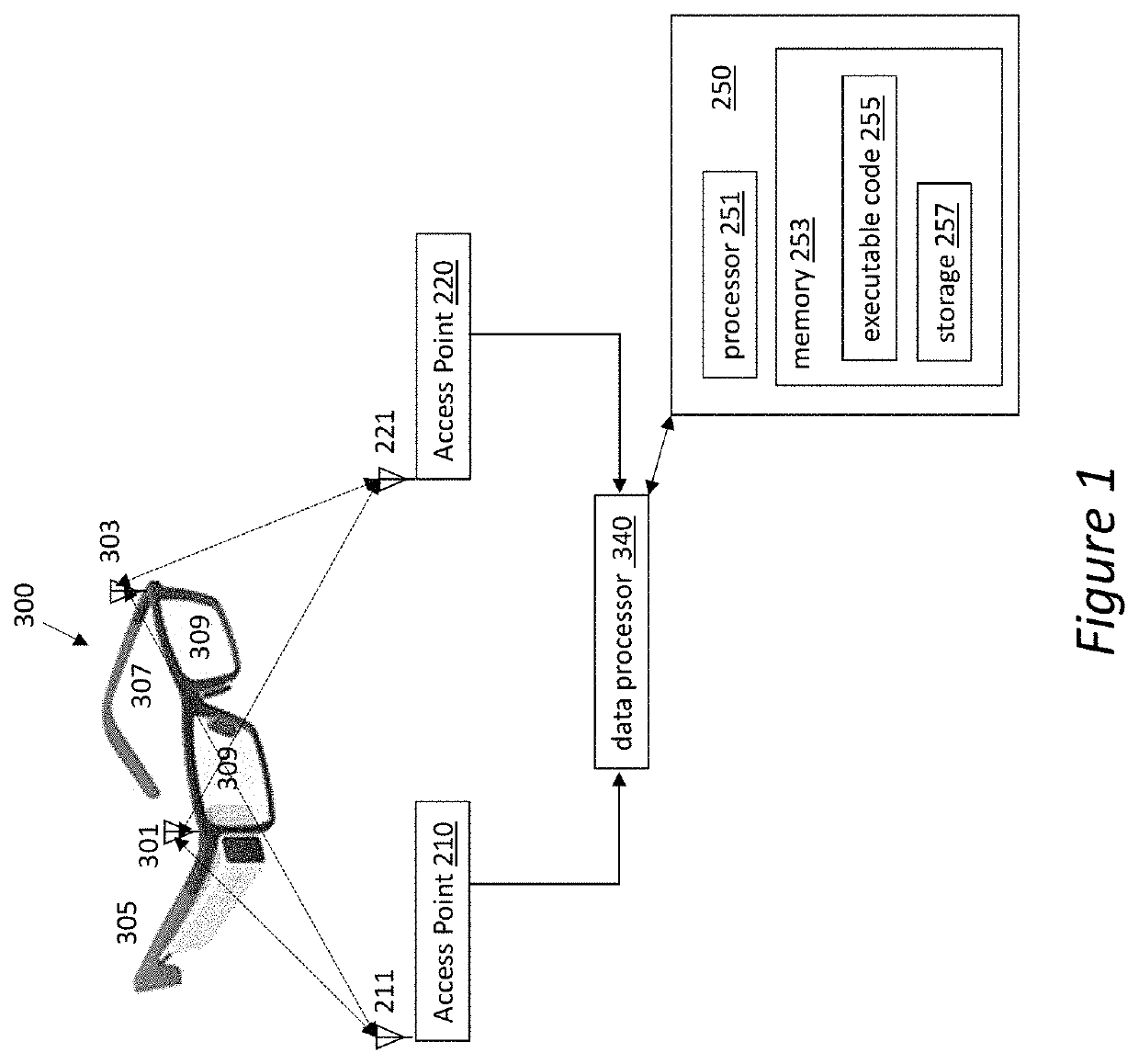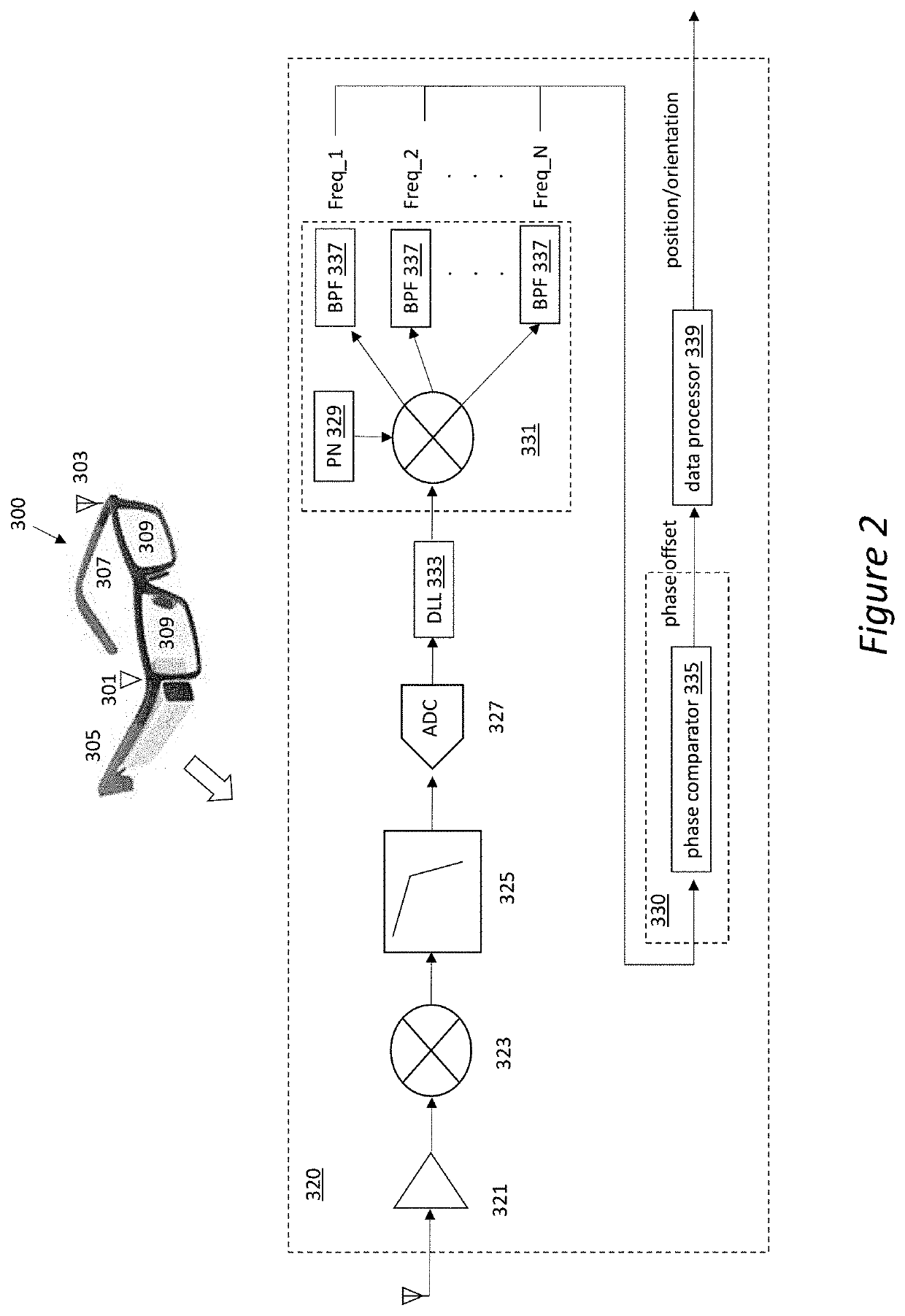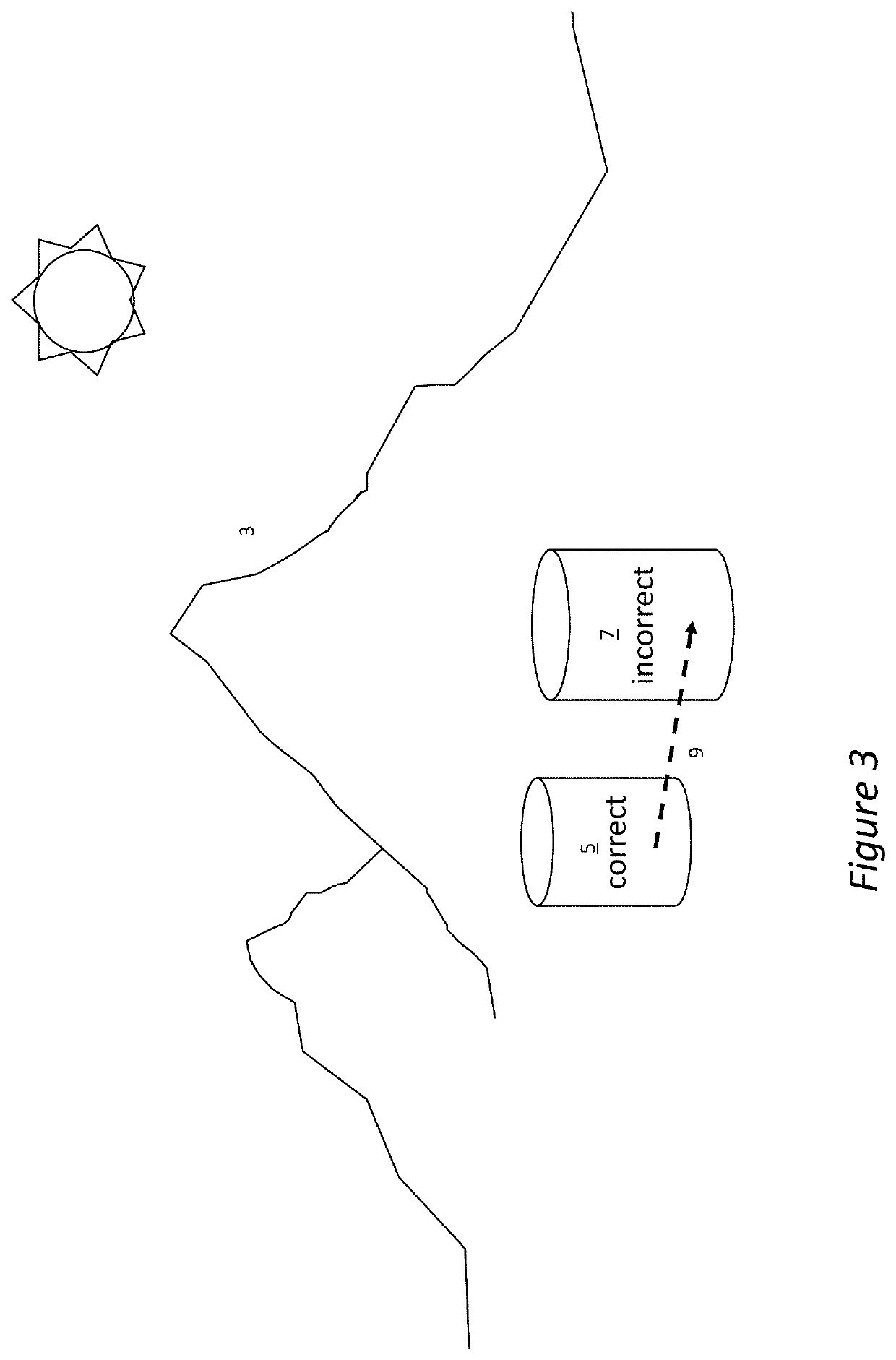Accurate geographic tracking of mobile devices
a mobile device and accurate technology, applied in the field of accurate geographic tracking of mobile devices, can solve the problems of not providing the high level of location accuracy necessary in many modern applications, gps signals that do not provide accuracy to five inches or less, and gps systems that do not work as well indoors
- Summary
- Abstract
- Description
- Claims
- Application Information
AI Technical Summary
Benefits of technology
Problems solved by technology
Method used
Image
Examples
first embodiment
[0064]In this first embodiment of FIG. 1, if the wireless Access Point 210 has a known absolute location (X,Y,Z, or any other coordinate system) with respect to a universal coordinate system, the absolute position and location within a 2-dimensional plane may be determined. This physical location is broadcasted as part of, or in addition to, the multiple frequency RF signal sent from the Access Points 210, 220. Similarly, the other Access Points also may transmit their absolute locations.
[0065]The use of a system employing a single Access Point may be acceptable in certain applications. For example, if one only requires to measure a distance from the Access Point 210 to an HMD 300, a single Access Point would be adequate. However, it is often desired to precisely determine and track the location and orientation of a mobile device, such as HMD 300. In this case, multiple Access Points would be required.
[0066]The present system provides improved location accuracy if there are two Acce...
PUM
 Login to View More
Login to View More Abstract
Description
Claims
Application Information
 Login to View More
Login to View More - R&D
- Intellectual Property
- Life Sciences
- Materials
- Tech Scout
- Unparalleled Data Quality
- Higher Quality Content
- 60% Fewer Hallucinations
Browse by: Latest US Patents, China's latest patents, Technical Efficacy Thesaurus, Application Domain, Technology Topic, Popular Technical Reports.
© 2025 PatSnap. All rights reserved.Legal|Privacy policy|Modern Slavery Act Transparency Statement|Sitemap|About US| Contact US: help@patsnap.com



